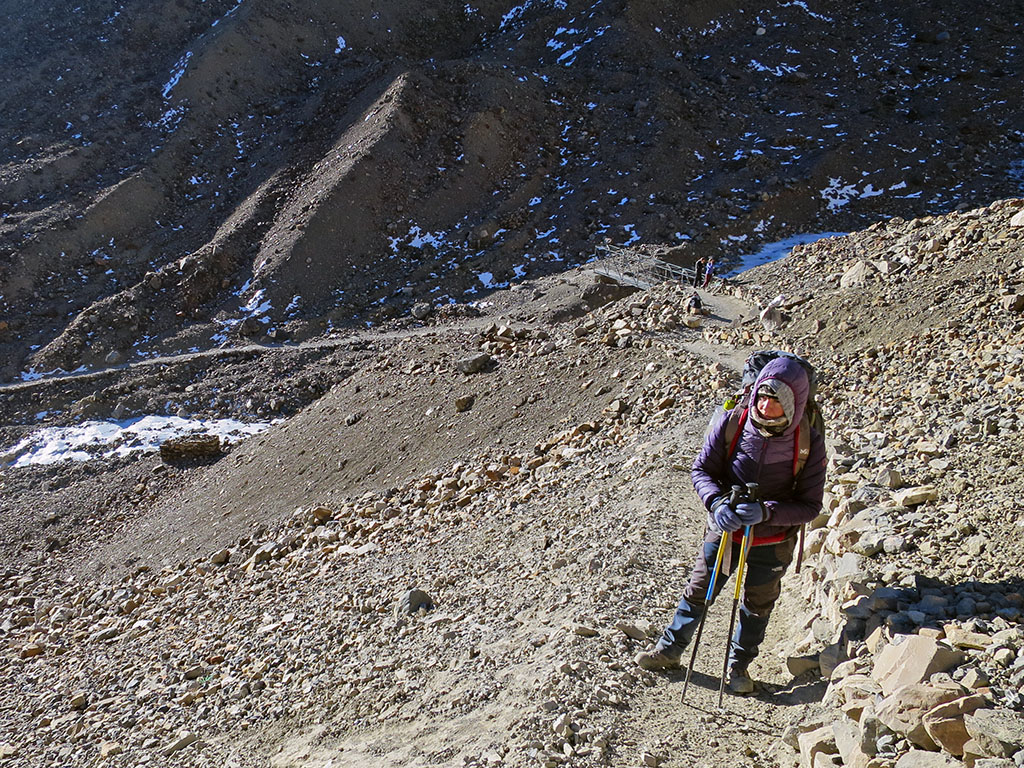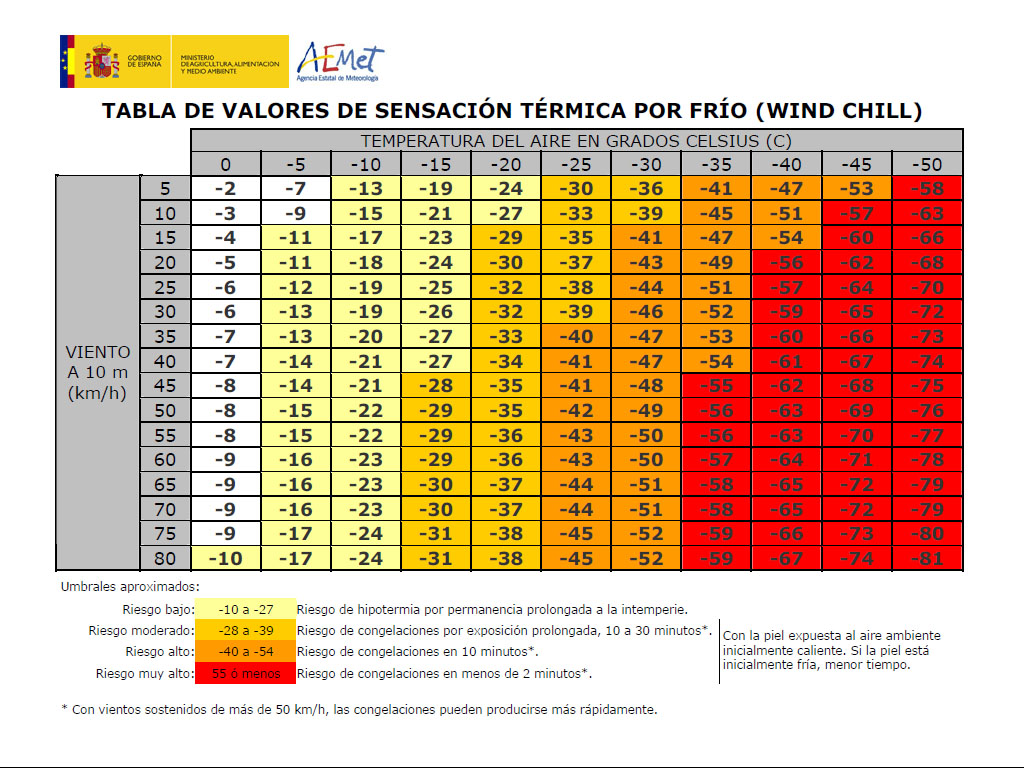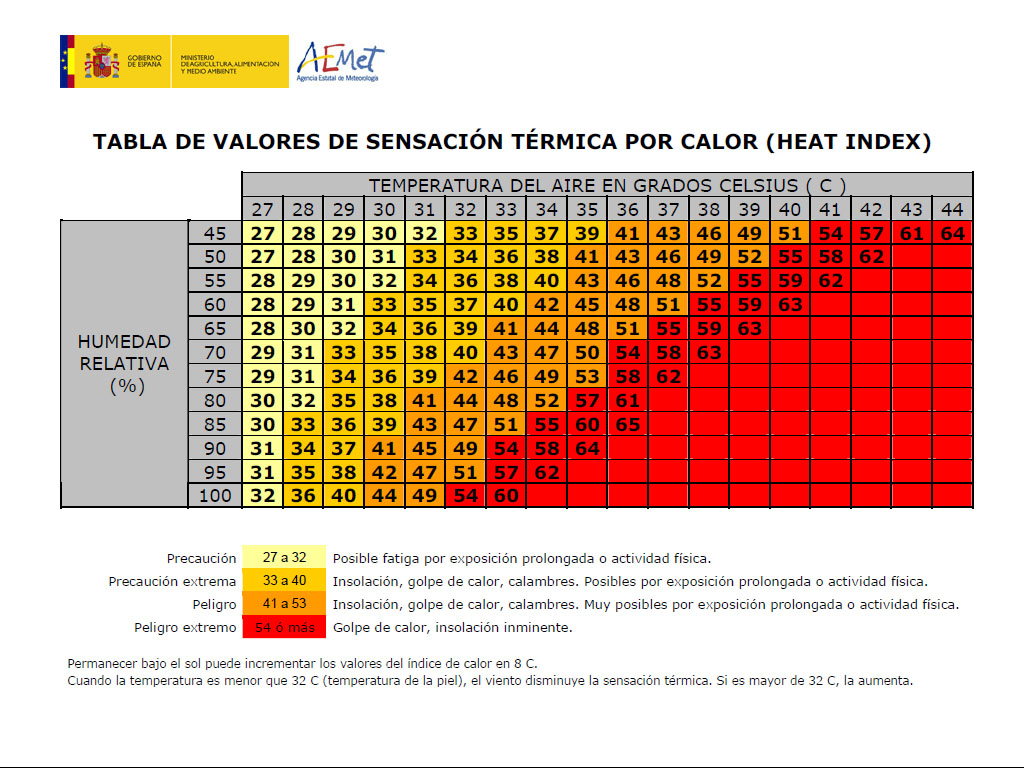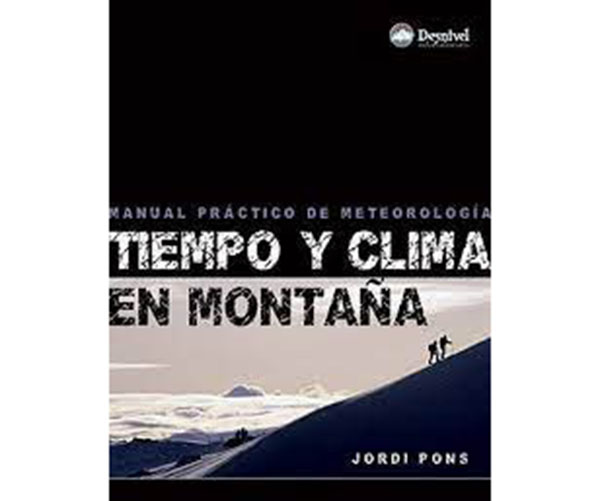Thermal Sensation

Although we have probably heard many times about the thermal sensation due to cold or heat, and we have a rough idea, we may not know exactly what it is.
The thermal sensation of cold or heat gives us an idea of the sensation of cold or heat that a person feels according to a combination of meteorological parameters. Two different concepts that, in order to understand, we will look at separately.
Wind Chill or wind chill
The wind chill depends on the combination of two factors: temperature and wind; and is calculated for temperatures below 10°C.
The idea is based on the theory of heat transfer. On the skin of the human body there is a thin layer of warm air a few millimetres thick. As the wind rises, it carries away the heat from the bare skin, which increases the heat loss from the human body and makes us feel colder.
It follows from this approach that cold wind chill only affects uncovered skin, which makes the clothing worn and the correct combination of clothing and clothing accessories particularly important. layer system. In adverse conditions it is particularly important to cover the extremities with gloves and balaclavas, especially when there is a risk of frostbite.
The following table, drawn up by AEMET (Agencia Estatal de Meteorología), gives a quantitative idea of how wind affects the sensation of cold, and the danger of frostbite on bare skin. Pay attention to the colour scheme for the risk of frostbite.

Thermal Sensation due to heat or humidity effect (Heat Index)
The heat wind chill depends on the combination of two different factors: temperature and relative humidity; and is calculated for temperatures above 20ºC.
The concept is based on the evaporation of sweat by the human body as a cooling mechanism. When the relative humidity of the air is high, the evaporation of sweat is hindered, which increases the sensation of heat.
As with cold, heat can cause different health disorders: fatigue, sunstroke, heat stroke or cramps. The recommendations in this case would be: avoid exposure to the sun in the central hours of the day, hydrate every 30 minutes, do not do (intense) physical exercise and wear appropriate clothing.
The following chart produced by AEMET (Agencia Estatal de Meteorología) gives a quantitative idea of how relative humidity affects the sensation of heat, and of the dangers this entails for health (pay attention to the colour scheme).

For more information on how the values in this table are calculated: SensacionTermicaPorFrio-Calor-AEMET.pdf
Recommended books:

Weather and climate in the mountains. Practical manual on meteorology.
- Author: Jordi Pons
- Editorial: Ediciones Desnivel S.L
- Language: English
- No. of pages: 144
- ISBN-10 : 8498291402
- ISBN-13 : 978-8498291407
- Publication: 2008

Meteorology: how to forecast the weather in the mountains
- Author: Joaquín Colorado Sierra
- Editorial: Ediciones Desnivel S.L
- Language: English
- No. of pages: 144
- ISBN-10 : 8498290686
- ISBN-13 : 978-8498290684
- Publication: 2007
YOU MAY BE INTERESTED IN:

The practice of mountain sports activities in winter involves an added series of risks that we must be aware of...
Don't miss any adventure in the Pyrenees!
